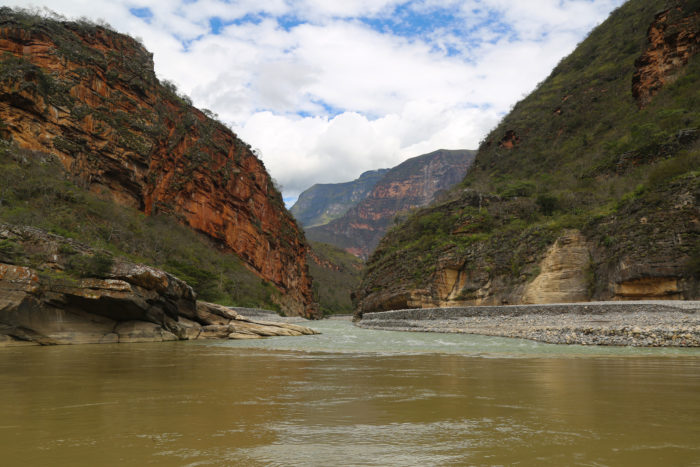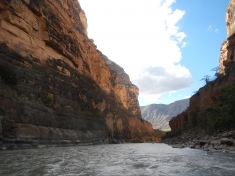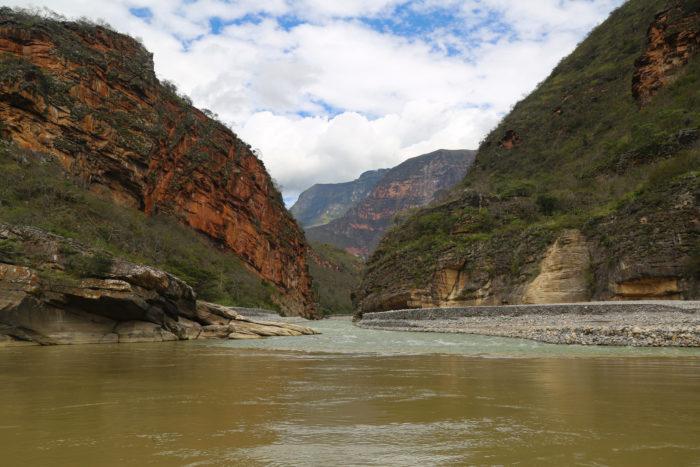
Foto: Cristian Díaz / SPDA
- Especialistas en conservación y en el sector energético se reunieron para conversar sobre los retos y propuestas de solución para la generación de energía sin afectar la conexión entre los principales ríos que conectan los Andes con la Amazonía.
- Conversatorio forma parte de El Perú que necesitamos, un ciclo de eventos virtuales organizados por la Sociedad Peruana de Derecho Ambiental que tienen como meta enfrentar los retos ambientales con acciones y políticas públicas concretas.
Este 23 de noviembre se llevó a cabo el conversatorio «Centrales hidroeléctricas en debate», un espacio organizado por la Sociedad Peruana de Derecho Ambiental (SPDA) para conocer las razones por los que los principales ríos andino-amazónicos no deberían ser represados.
Diversos especialistas de la conservación como Bruno Monteferri, director de Conservamos por Naturaleza y Sandra B. Correa, profesora de la Universidad de Mississippi, y del sector energético como Claudio Helfmann, gerente de desarrollo de negocios de Enel Green Power y César Butrón, presidente del Comité de Operación Económica del Sistema Interconectado Nacional (COES) participaron del evento. La moderación estuvo a cargo de Pamela Loli, del equipo de comunicaciones de la SPDA.
Este conversatorio abordó, desde distintos puntos de vista, las problemáticas ambientales y económicas que conlleva la construcción de centrales hidroeléctricas con represas en zonas fluviales y biodiversas, tomando como análisis central el caso de los proyectos Veracruz y Chadín 2 planificados en el río Marañón.
Una planificación energética sin impactos acumulativos
Bruno Monteferri señaló la importancia de proteger el río Marañón debido a su vulnerabilidad geográfica, ya que se encuentra ubicado en un punto de conexión natural entre los Andes y la Amazonía peruana. Además, alberga bosques únicos, especies endémicas y pinturas rupestres aún no estudiadas.
El especialista agregó que estas megarepresas bloquean el flujo de sedimentos entre el río Marañón y el río Amazonas, provocando la migración de peces y una posible inundación de cientos de comunidades indígenas y ribereñas. También señaló la importancia de tener claro cuáles son los proyectos que ya no cuentan con certificaciones ambientales vigentes.
«Consideramos que desde un punto de vista de transparencia, el registro de Senace debería indicar cuándo las certificaciones ambientales ya no se encuentran vigentes», indicó Bruno Monteferri respecto a los proyectos de megarrepresas en el río Marañón.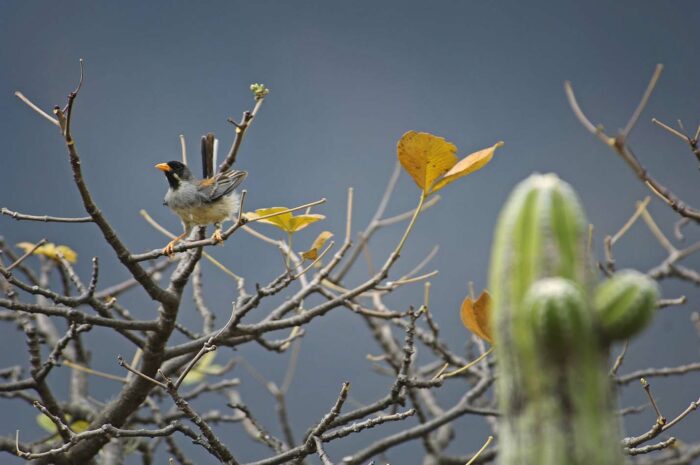
Foto: Walter H. Wust
Sandra B. Correa, profesora de la Universidad de Mississippi, por otro lado, mencionó los riesgos ambientales y sociales que existen al construir este tipo de infraestructuras en ríos con alta importancia en términos de conexión. «El Perú tiene las cabeceras de muchos de los ríos amazónicos de la región, por lo que este tipo de construcciones de represas pueden causar grandes riesgos en términos de conexión», agregó.
Frente a desafíos como una planificación de fuentes de energía más sostenibles en el país, Claudio Helfmann, gerente de desarrollo de negocios en Enel Green Power Perú, señaló que en un contexto de cambio climático es importante apostar por proyectos energéticos con el menor impacto posible en el planeta.
«Nos estamos orientando a energías renovables y con el menor impacto posible en el medio ambiente, por lo que estamos abandonando los grandes proyectos hidroeléctricos», agregó. Además, también indicó que el proyecto Veracruz, pensado en construirse en el Marañón, ya no forma parte de la cartera de proyectos de Enel.
El Perú tiene una demanda de energía cubierta para los próximos años, según Cesar Butrón, presidente del COES, quien señaló la oposición a la construcción de este tipo de infraestructuras en distintos países de la región y el mundo. Además, señaló que «en un contexto en el que la energía social y eólica son más competitivas, las construcciones de centrales hidroeléctricas con represas ya no son una opción«
Para conocer más sobre el caso del río Marañón y de las diversas acciones que se realizan para protegerlo y que sus aguas sigan fluyendo libres, las personas interesadas pueden visitar el especial multimedia www.conservamos.org/rioslibres/
El Perú que necesitamos: Propuestas para una agenda de desarrollo sostenible
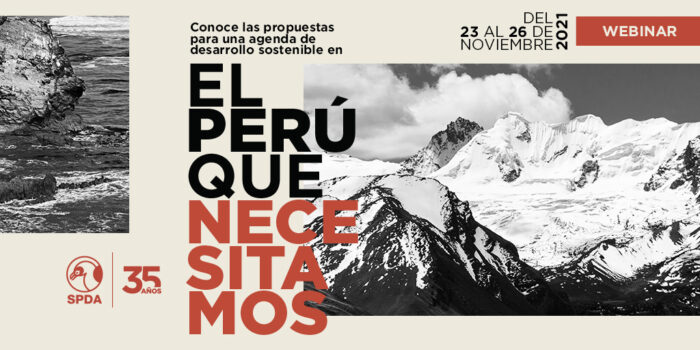
Como parte de su 35 aniversario, la Sociedad Peruana de Derecho Ambiental (SPDA) viene desarrollando una serie de encuentros gratuitos enfocados en construir una agenda ambiental para los próximos años. Este evento apunta a generar un debate entre los participantes a fin de sumar ideas enfocadas en mejorar las políticas públicas ambientales necesarias para lograr un país más justo y sostenible.
Las propuestas abarcan diversos temas, desde bosques, fauna silvestre, justicia ambiental, pesca sostenible y territorios indígenas. Además de estos encuentros, se presentarán dos documentales.
La inscripción a las conferencias es gratuita a través de https://spda.org.pe/elperuquenecesitamos
Transmisión completa en el Facebook de la SPDA
Este conversatorio puede encontrarse completo en la página de Facebook de la SPDA, así como también en el canal de Youtube.https://www.actualidadambiental.pe/conversatorio-centrales-hidroelectricas-debate-rios-andino-amazonicos-represas-peru-necesitamos/

